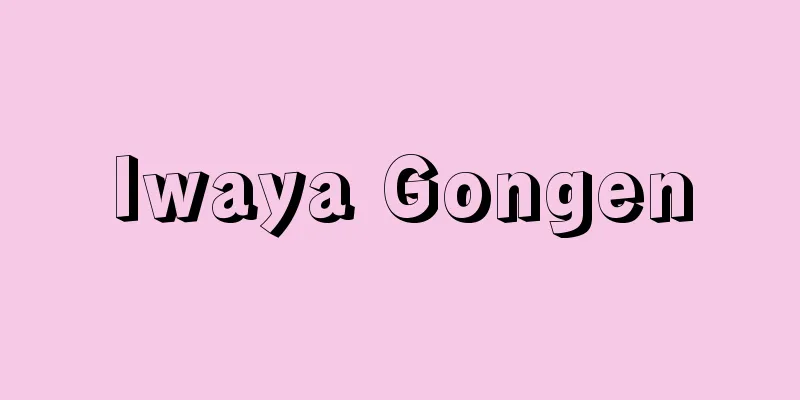Kenzaburo Oe

|
Literary figure. Born January 31, 1935 in Ehime Prefecture. While studying French literature at the Faculty of Letters, University of Tokyo, his novel "Kimi ga Shigoto" (1957) won the prize for a May Festival novel contest, selected by Masahito Ara, and was published in the "Tokyo University Newspaper." Hirano Ken praised it highly in his literary review in the "Mainichi Shimbun," and literary magazines flooded him with orders, leading to the publication of "Shisha no Ogoori" (The Pampering of the Dead) and "Tanin no Ashi" (The Feet of Others). He was recognized by the literary world as a major new writer. He then won the Akutagawa Prize for "Shiiku" (Cultivation) (1958). He wrote about youth in a suffocating situation with no way out in a fresh, translated novel-like style, and together with Shintaro Ishihara and Takeshi Kaiko, he was expected to be a successor to the first wave of postwar literature, surpassing the so-called "Third Generation of New Writers" (Shotaro Yasuoka, Junnosuke Yoshiyuki, etc.). He continued to write short stories such as Look Before You Jump (1958), A Lonely Youth's Holiday (1960), and the full-length novel Youth's Disgrace (1960), before publishing Seventeen and A Political Boy Dies (both in 1961), both based on the stabbing murder of Socialist Party Chairman Asanuma Inejiro in 1960 (Showa 35). The latter caused a stir by depicting a boy who was oppressed and plagued by feelings of smallness, but who tries to achieve self-liberation through a sense of belonging to the Emperor system, superimposed on sexual elation. As a result, he received threats from right-wing groups, and this novel is still not included in any of Oe's collections. However, even after this, he continued to publish experimental works such as the short story collection Sexual Man (1963), the novel The Scream (1963), and Adventures in Everyday Life (1964), in which he approached people who failed in their quest for self-liberation, or who dropped out and tried to protest against the contemporary situation, from a sexual perspective. He started out as a student writer and entered his life as a writer without any experience as a member of society. His works often feature young, inactive writers, likely a reflection of the author's own position. In contrast to them, a group of young people who are rioters appears and begin living together, bound by a strange sense of solidarity. The structure of Oe's Wonderland was gradually formed through a series of such experimental works. The most outstanding achievement of this was "Man'en Gannen no Futbol" (1967), for which he won the Tanizaki Junichiro Prize. Oe's subsequent works were influenced by mythological themes, concepts of clowns, and Russian formalist theory, which bore fruit in works such as "Teach Me the Way to Survive Our Madness" (1969), "The Day I Wipe My Tears Away" (1972), and "The Flood Reaches My Soul" (1973, Noma Literary Prize), inspired by the United Red Army incident. He subsequently published Pinch Runner's Report (1976) and Contemporaneous Game (1979), which attempted to transform the functions of inactive writers into polyphonic artists, a collection of short stories, Modern Legends (1980), and a collection of serial stories, Women Listening to the Rain Tree (1982, Yomiuri Literature Prize winner). He also wrote Hippo Bitten (1985), Letter to a Nostalgic Year (1987), a near-future sci-fi work, The Treatment Tower (1990), its sequel, The Treatment Tower Planet (1991), and The Burning Green Tree, Parts 1-3 (1993, 1994, 1995). His attitude of constantly working to meet the needs of the situation also led to the publication of a number of excellent collections of essays, such as "A Solemn Tightrope Walk" (1965), "Sustained Ambition" (1968), "Humanity as Fragile" and "The Imagination of the Nuclear Age" (both 1970), "The Day the Whales Die" (1972), "The Postwar as a Contemporary Era" (1973), "To the Situation" (1974), "By Words" (1976), "Methods of Novels" (1978), and "Reading the Method" (1980). From the late 1990s to the 2000s, he published a succession of collections of essays and critiques, including "Letters from the 'I' of Japan" (1996), "Under My Own Tree", "We Must Not Isolate the Country", and "With Difficult to Express Lamentations" (all 2001). Meanwhile, Oe's novels have been translated into many languages, and he has been highly acclaimed abroad. In 1994, he became the second Japanese to win the Nobel Prize in Literature. However, around the 1990s, the style of Oe's writing changed. It turned from an experimental and avant-garde tendency to autobiographical novels. The subject matter also changed to personal notes. In particular, many of his works focused on the various events that led to his son Hikari Oe (1963- ), who was born with a disability, becoming a composer. For example, the serial novel "Quiet Life" (1990), the long essay "Recovering Family" (1995), and "Gentle Bonds" (1996) are among them. The world of his first work, which made full use of his limitless and unrestrained imagination, is gone, and novels that directly trace his own life as it actually happened are becoming more prominent. However, among these works, "The Changeling" (2000), which deals with the examples of jealousy, obstruction and slander that occurred around him around the time of his brother-in-law, film director Juzo Itami's suicide (1997) and his Nobel Prize award, as well as the hustle and bustle in the media, and the Oe family shaken by these, was highly praised as a new style of personal novel. Also, "Somersault" Vol. 1 (1999), which is a typical Oe novel, was inspired by the Aum Shinrikyo incident. His attitude of constantly being involved in the situation is still alive and well. [Tsuruo Matsumoto] "Oe Kenzaburo: Contemporary Essays," 10 volumes (1980-81, Iwanami Shoten)" ▽ "Oe Kenzaburo Complete Works," 6 volumes in first period, 6 volumes in second period (1994, Shinchosha)" ▽ "Oe Kenzaburo Novels" (1996-97, Shinchosha) ▽ "The Healing Tower" (1990, Iwanami Shoten) ▽ "The Healing Tower Planet" (1991, Iwanami Shoten) ▽ "Somersault" Volumes 1 and 2 (1999, Kodansha ) ▽ "Changing" (2000, Kodansha) ▽ "Under My Own Tree" (2001, Asahi Shimbun) ▽ "Unspeakable Lament" (2001, Kodansha) ▽ "We Must Not Isolate Our Country" (2001, Kodansha) ▽ "The Youth's Dishonor, Bitten by a Hippopotamus" (Bunshun Bunko)" ▽ "Shooting the Buds and Shooting the Young, The Arrogance of the Dead, Leap Before You Look, Late Coming Youth, Adventures in Everyday Life, Sexual Man, Our Times, Teach Me How to Survive Our Madness, The Flood Reaches My Soul, Volumes 1 and 2, The Burning Green Tree, Parts 1-3, Women Listening to the Rain Tree, The Game of the Same Era, Pinch Runner's Report, How to Make a Novelist of Myself (Shincho Bunko)" ▽ "The Postwar as a Contemporaneous Era, Awaken, New Man, The Recovering Family, Loose Bonds" (Kodansha Bunko)" ▽ "Solemn Tightrope Walk," "The Day the Whales Died," "Sustained Ambition," "The Scream," "Football in 1860," "The Day I Wiped My Own Tears," "Letter to a Nostalgic Year," and "Quiet Life" (Kodansha Bungei Bunko) ▽ "Hiroshima Notes," "Letter from the Japanese 'I'" (Iwanami Shinsho) ▽ "On Oe Kenzaburo: Unfulfilled Dreams" by Kawanishi Masaaki (1979, Kodansha) ▽ "Oe Kenzaburo Literature: Overseas Evaluation" edited by Samuel, Takeda Katsuhiko, Yokochi Yoshiko and others (1987, Sorinsha) ▽ "Portraits of Japanese Writer Oe Kenzaburo" by Masao Miyoshi and others (1992, Shogakukan) ▽ "On Oe Kenzaburo" by Hasumi Shigehiko (1994, Seidosha) "Washida Koyata, Nakazawa Chimao, Kuwahara Takekazu, 'A Discussion: Who was Oe Kenzaburo, His Person, His Works, His Image?' (1995, San-ichi Shobo)" ▽ "Nakamura Yasuyuki, 'Oe Kenzaburo: His Literary Trajectory' (1995, Shin Nihon Shuppansha)" ▽ "Enomoto Masaki, 'Oe Kenzaburo in the 1980s' (1995, Sairyusha)" ▽ "Kuwahara Takekazu, 'Oe Kenzaburo Theory' (1997, San-ichi Shobo)" ▽ "Kurogo Kazuo, 'Oe Kenzaburo and the Literature of This Era' (1997, Bensei Publishing)" ▽ "Literary Appreciation Reader: Understanding Oe Kenzaburo,' revised new edition, edited by the Literary Research Project (1998, Japan Mix)" ▽ "The Oe Kenzaburo Literary Encyclopedia - A Complete Guide to All His Works, Chronology, and Bibliography" edited by Shinohara Shigeru (1998, Studio VIC)" ▽ "Rediscovering Oe Kenzaburo" edited by Oe Kenzaburo and Subaru Editorial Department (2001, Shueisha)" ▽ "Oe Kenzaburo: The Agony and Rebirth of Body and Soul, by Jean-Louis Scheffer, translated by Sugawara Seiki (2001, Meiso Publishing)" ▽ "The Magical Power of Topos: Oe Kenzaburo and Nakagami Kenji" by Zhang Wen-ying (2002, Senshu University Press)" [References] | | | | | | | |Source: Shogakukan Encyclopedia Nipponica About Encyclopedia Nipponica Information | Legend |
|
文学者。昭和10年1月31日、愛媛県生まれ。東京大学文学部仏文学科在学中、五月祭の懸賞小説として『奇妙な仕事』(1957)が荒正人(まさひと)の選で入賞し『東京大学新聞』に掲載され、それを平野謙(けん)が『毎日新聞』の文芸時評で激賞し、文芸雑誌から注文が殺到し『死者の奢(おご)り』と『他人の足』を発表。大型新人として文壇に認められた。続いて『飼育』(1958)で芥川(あくたがわ)賞を受賞。出口なしの閉塞(へいそく)状況下の青春を翻訳小説調のみずみずしい文体で描き、石原慎太郎や開高健(たけし)らとともに、いわゆる第三の新人(安岡章太郎、吉行淳之介など)を飛び超えて、第一次戦後派文学の後継者の世代として期待された。短編集『見るまえに跳べ』(1958)、『孤独な青年の休暇』(1960)、長編『青年の汚名』(1960)などを書き継ぎ、1960年(昭和35)の社会党委員長浅沼稲次郎の刺殺事件を素材とする『セヴンティーン』と『政治少年死す』(ともに1961)を発表。後者は、被抑圧の卑小感に悩む少年が、天皇制への帰属感によって自己解放を遂げようとする姿を性的な高揚感と重ねて描き出して話題をよんだ。その結果、右翼団体からの脅迫を受けたため、この小説はいまも大江のどの作品集にも収録されていない。しかしこれ以後も彼は、自己解放を目ざして挫折(ざせつ)する人間、あるいは自らドロップアウトして現代状況に異議申立てをしようとする人々を、性的な次元からとらえる方法によって、短編集『性的人間』(1963)、長編『叫び声』(1963)、『日常生活の冒険』(1964)などの実験作を刊行した。 学生作家として出発した彼は社会人としての生活を経ずに作家生活に入った。たぶん、そのような作者自身の立場が投影されたと思われる非行動的な若い作家が彼の作品にはしばしば登場する。また、それと対(つい)になって暴動実行者の青年グループが出現して、奇妙な連帯感で結ばれた共同生活を始める。そういう大江ワンダーランドの構図が、このような実験作を重ねることでしだいに形成されていった。その優れた達成が『万延(まんえん)元年のフットボール』(1967)である。この作品で谷崎潤一郎賞を受賞。これ以後の大江作品には神話学的題材や道化の概念、ロシア・フォルマリズム理論などの影響がみられ、それは『われらの狂気を生き延びる道を教えよ』(1969)、『みずから我が涙をぬぐいたまう日』(1972)や、さらに連合赤軍事件にヒントを得た『洪水はわが魂に及び』(1973。野間文芸賞)などに結実した。その後、非行動的な作家をポリフォニー的な表現者に機能転換させようと試みた『ピンチランナー調書』(1976)や『同時代ゲーム』(1979)、中・短編集『現代伝奇集』(1980)、連作小説集『「雨の木」を聴く女たち』(1982。読売文学賞)を発表。さらに、『河馬に噛(か)まれる』(1985)、『懐かしい年への手紙』(1987)、近未来SF『治療塔』(1990)、その続編『治療塔惑星』(1991)、『燃えあがる緑の木』第1~3部(1993、94、95)などが書かれた。 また、絶えず状況へのかかわりのなかで仕事を自分に課していく姿勢は、数々の優れたエッセイ集も生んだ。たとえば『厳粛な綱渡り』(1965)、『持続する志』(1968)、『壊れものとしての人間』『核時代の想像力』(ともに1970)、『鯨の死滅する日』(1972)、『同時代としての戦後』(1973)、『状況へ』(1974)、『言葉によって』(1976)、『小説の方法』(1978)、『方法を読む』(1980)などがある。また、1990年代後半から2000年代にかけて、エッセイ集、評論集を立て続けに発表している。『日本の「私」からの手紙』(1996)、『「自分の木」の下で』『鎖国してはならない』『言い難(がた)き嘆きもて』(いずれも2001)などである。 一方、大江の小説は世界各国語に翻訳され、海外での評価が高まり、1994年(平成6)に日本で2人目のノーベル文学賞を受賞。だが、90年代あたりから大江文学の作風に変化が生じた。実験的、前衛的な傾向から一転して私小説的になった。題材も身辺雑記的に変化。とくに障害をもって生まれた息子の大江光(ひかり)(1963― )が作曲家になるまでのさまざまないきさつを中心に描いたものが多くなった。たとえば、連作小説『静かな生活』(1990)、長編エッセイ『恢復(かいふく)する家族』(1995)、『ゆるやかな絆(きずな)』(1996)などである。際限のない奔放な想像力を駆使した第一作以来の世界はなくなり、実際にあった自分の生活をそのままなぞるような小説が目だってきた。しかし、それらのなかでも義兄で映画監督の伊丹十三の自死(1997)とノーベル賞受賞前後の身辺に起こった嫉視(しっし)や妨害や中傷の実例、マスコミの喧騒(けんそう)、さらにはそれらに揺れる大江家を題材にした『取り替え子』(2000)などは新しいスタイルの私小説として高い評価を得た。また、それとは別に在来の大江小説らしい『宙返り』上下(1999)は、オウム真理教事件がヒントになった作品。状況に絶えずかかわっていく姿勢は健在である。 [松本鶴雄] 『『大江健三郎同時代論集』全10巻(1980~81・岩波書店)』▽『『大江健三郎全作品』第1期6巻、第2期6巻(1994・新潮社)』▽『『大江健三郎小説』(1996~97・新潮社)』▽『『治療塔』(1990・岩波書店)』▽『『治療塔惑星』(1991・岩波書店)』▽『『宙返り』上下(1999・講談社)』▽『『取り替え子(チェンジング)』(2000・講談社)』▽『『「自分の木」の下で』(2001・朝日新聞社)』▽『『言い難き嘆きもて』(2001・講談社)』▽『『鎖国してはならない』(2001・講談社)』▽『『青年の汚名』『河馬に噛まれる』(文春文庫)』▽『『芽むしり仔撃ち』『死者の奢り』『見るまえに跳べ』『遅れてきた青年』『日常生活の冒険』『性的人間』『われらの時代』『われらの狂気を生き延びる道を教えよ』『洪水はわが魂に及び』上下『燃えあがる緑の木』第1~3部『「雨の木」を聴く女たち』『同時代ゲーム』『ピンチランナー調書』『私という小説家の作り方』(新潮文庫)』▽『『同時代としての戦後』『新しい人よ眼ざめよ』『恢復する家族』『ゆるやかな絆』(講談社文庫)』▽『『厳粛な綱渡り』『鯨の死滅する日』『持続する志』『叫び声』『万延元年のフットボール』『みずから我が涙をぬぐいたまう日』『懐かしい年への手紙』『静かな生活』(講談社文芸文庫)』▽『『ヒロシマ・ノート』『日本の「私」からの手紙』(岩波新書)』▽『川西政明著『大江健三郎論 未成の夢』(1979・講談社)』▽『サミュエル・武田勝彦・横地淑子ほか編著『大江健三郎文学 海外の評価』(1987・創林社)』▽『マサオ・ミヨシ他著『群像日本の作家 大江健三郎』(1992・小学館)』▽『蓮実重彦著『大江健三郎論』(1994・青土社)』▽『鷲田小弥太・中沢千磨夫・桑原丈和著『鼎談:人・作品・イメージ 大江健三郎とは誰か』(1995・三一書房)』▽『中村泰行著『大江健三郎 文学の軌跡』(1995・新日本出版社)』▽『榎本正樹著『大江健三郎の八〇年代』(1995・彩流社)』▽『桑原丈和著『大江健三郎論』(1997・三一書房)』▽『黒古一夫著『大江健三郎とこの時代の文学』(1997・勉誠出版)』▽『文芸研究プロジェ編著『文芸鑑賞読本 よくわかる大江健三郎』改訂新版(1998・ジャパン・ミックス)』▽『篠原茂編著『大江健三郎文学事典――全著作・年譜・文献完全ガイド』(1998・スタジオVIC)』▽『大江健三郎・すばる編集部編『大江健三郎・再発見』(2001・集英社)』▽『ジャン・ルイ・シェフェル著、菅原聖喜訳『大江健三郎 その肉体と魂の苦悩と再生』(2001・明窓出版)』▽『張文穎著『トポスの呪力 大江健三郎と中上健次』(2002・専修大学出版局)』 [参照項目] | | | | | | | |出典 小学館 日本大百科全書(ニッポニカ)日本大百科全書(ニッポニカ)について 情報 | 凡例 |
Recommend
Intermediate fiber
...The transformation of cancer cells into round ...
Sunshoan Shikishi
This is a masterpiece of ancient calligraphy, cou...
Kilonomas type - Kilonomas type
...In contrast, in lakes in the plains where phyt...
praenomen
… The Etruscan influence is believed to have been...
Thaton (English spelling)
A city in Mon State in southeastern Myanmar. It is...
Median Valley
… seachannel — A continuously sloping elongated d...
Yokota Manor - Yokota no Sho
A manor in Nita County, Izumo Province. It was loc...
Gene pool
Gene pool is a conceptual term that refers to the ...
Iheiju
A calligrapher from the mid-Qing Dynasty of China...
Mukabaki
A travel item worn around the feet. The style vari...
Usuki rock carved Buddha
<br /> A group of stone Buddha statues in Ma...
Yueyang
A prefecture-level city in northeastern Hunan Pro...
marmelada
...Fruits used include strawberries, currants, ra...
Viper - Viper
A general term for snakes belonging to the subfam...
coercive force
…The magnetization (OM) at this point is called r...






![Wedgwood [company] - Wedgwood](/upload/images/67cf8110dcef7.webp)


